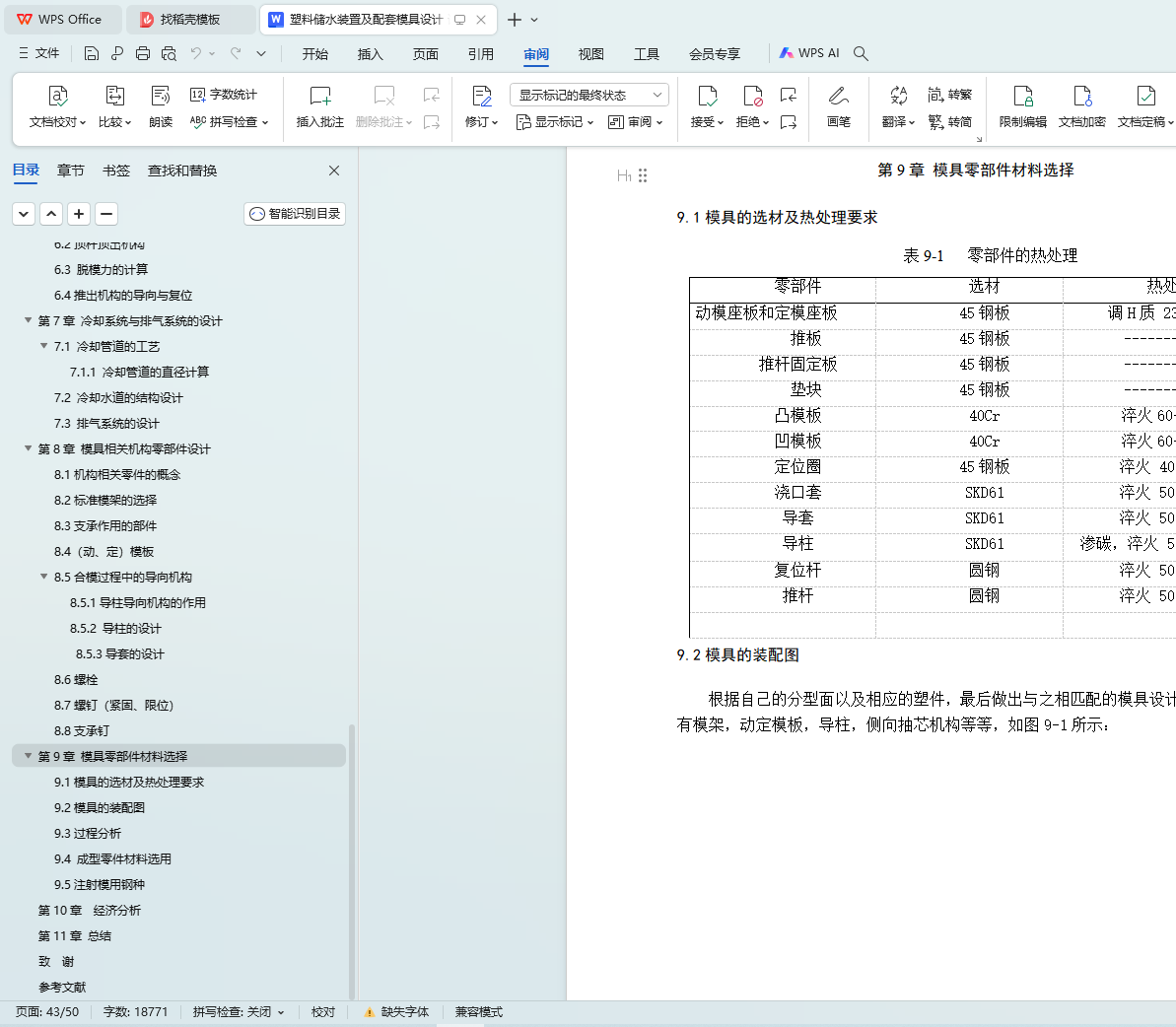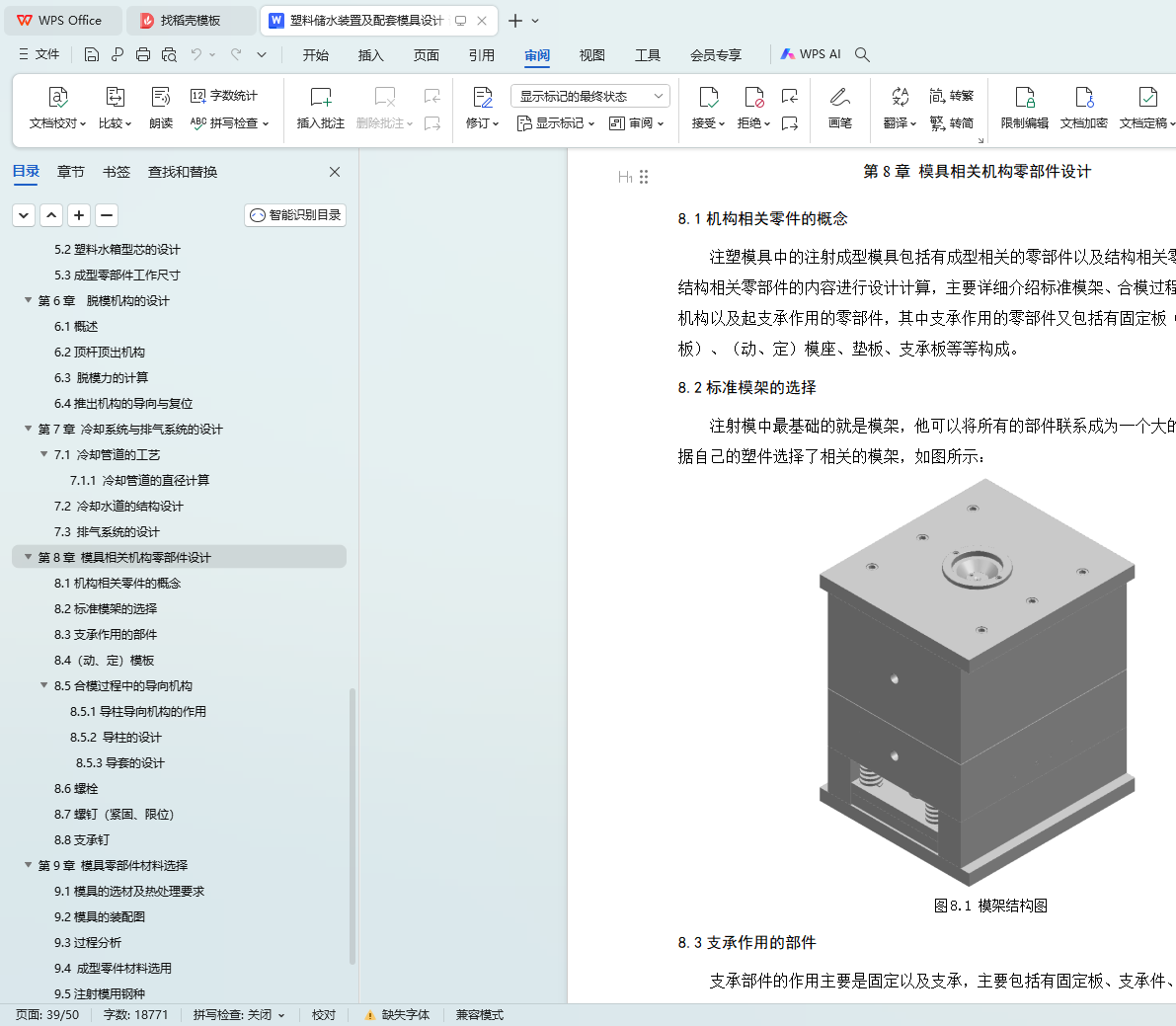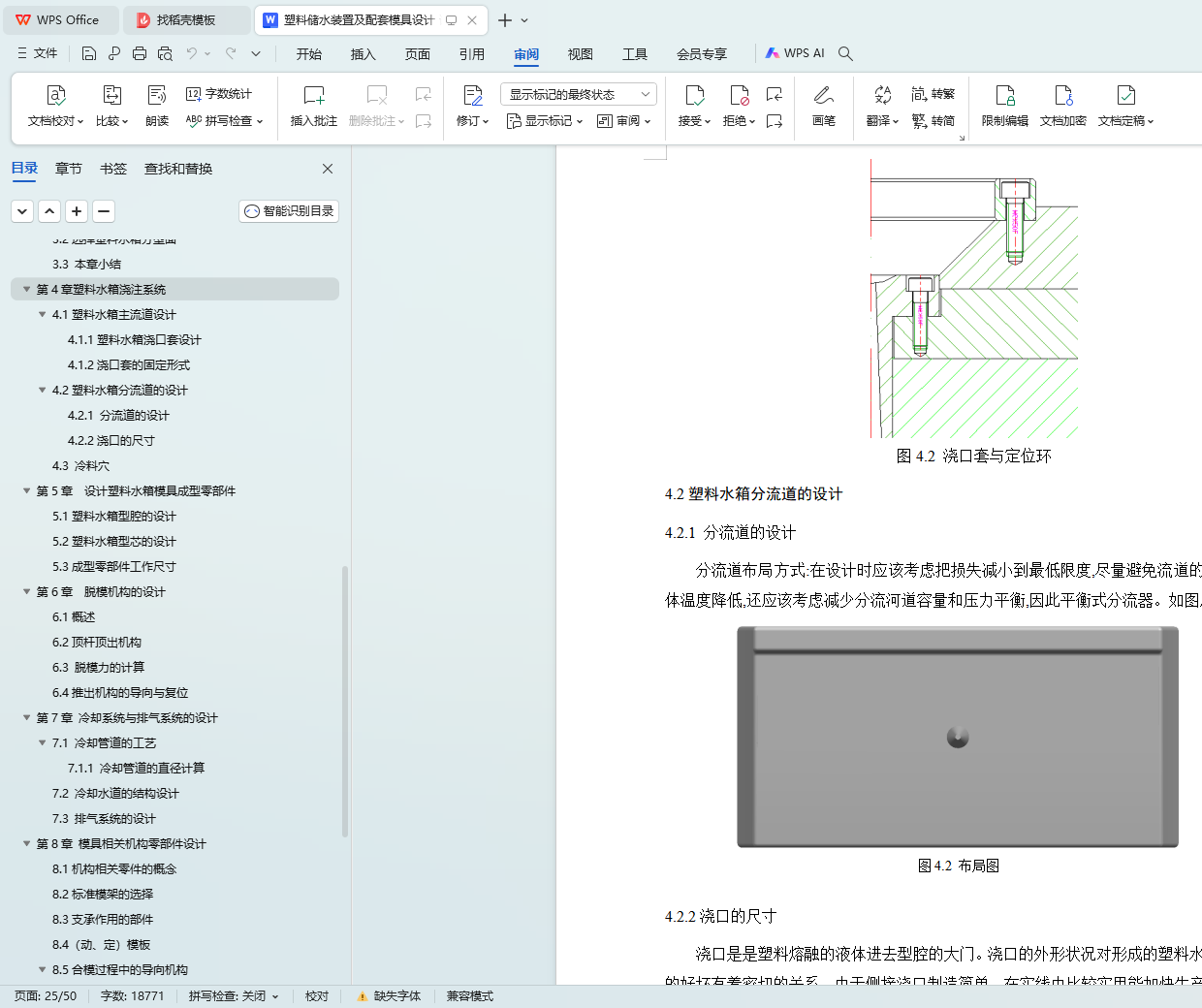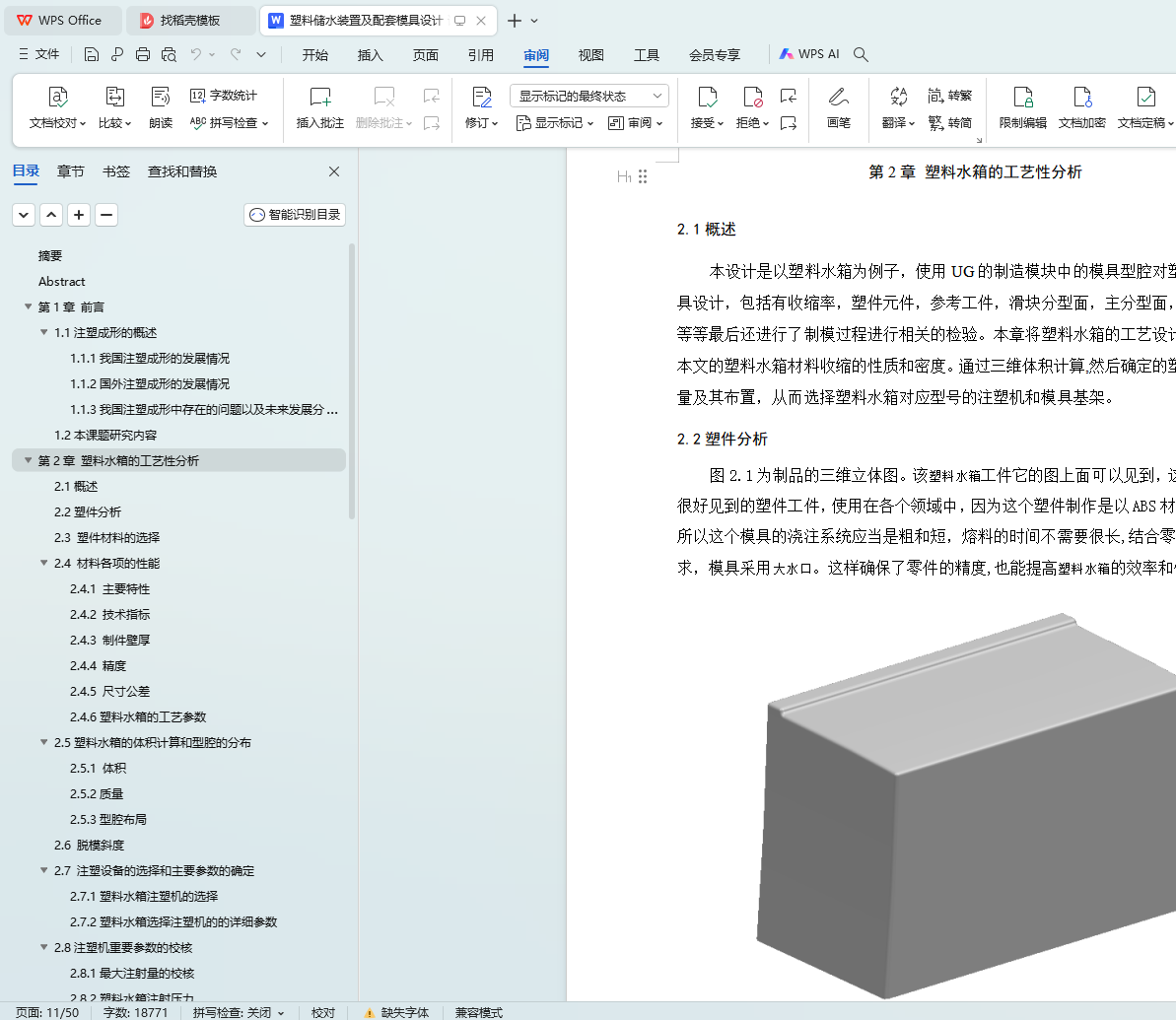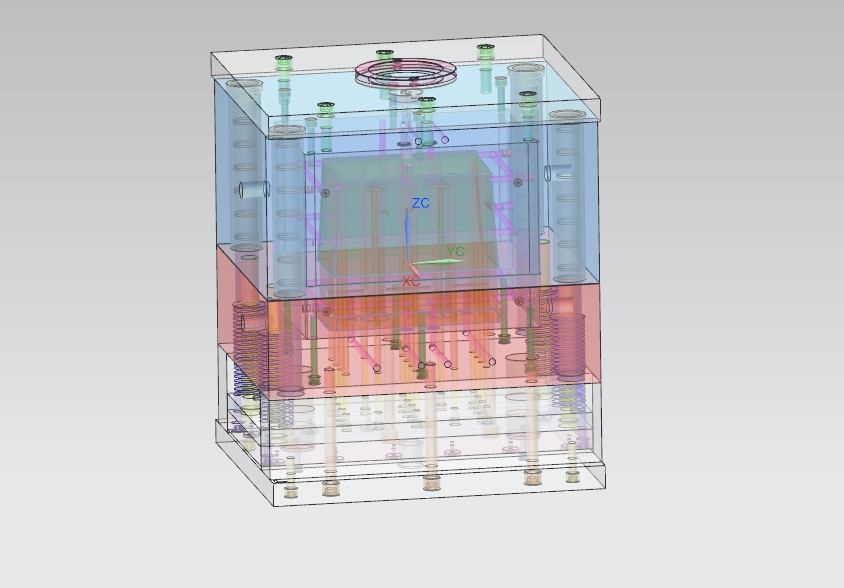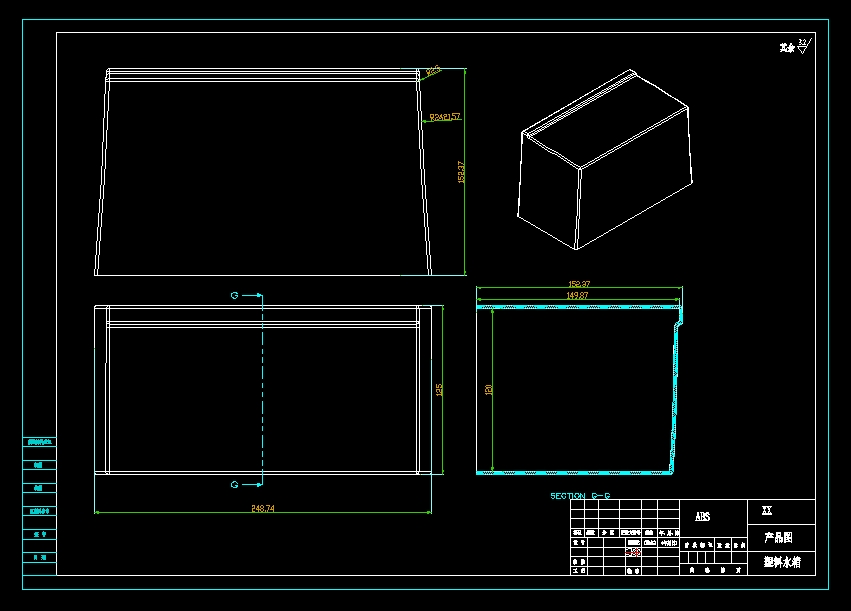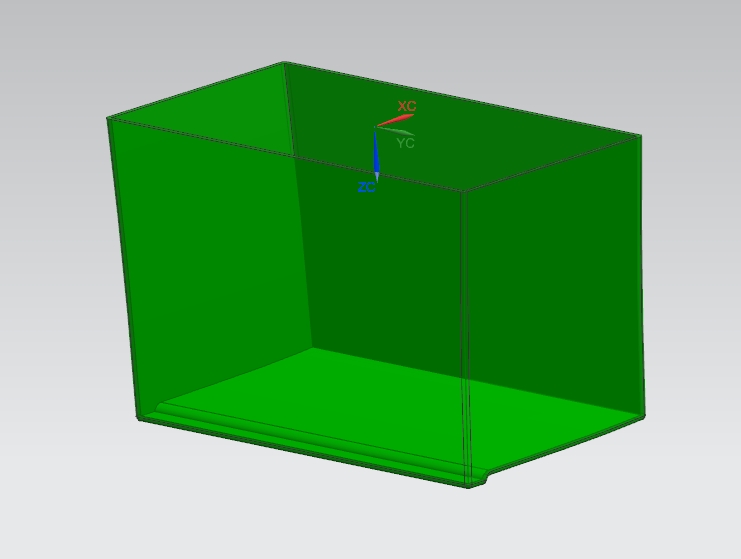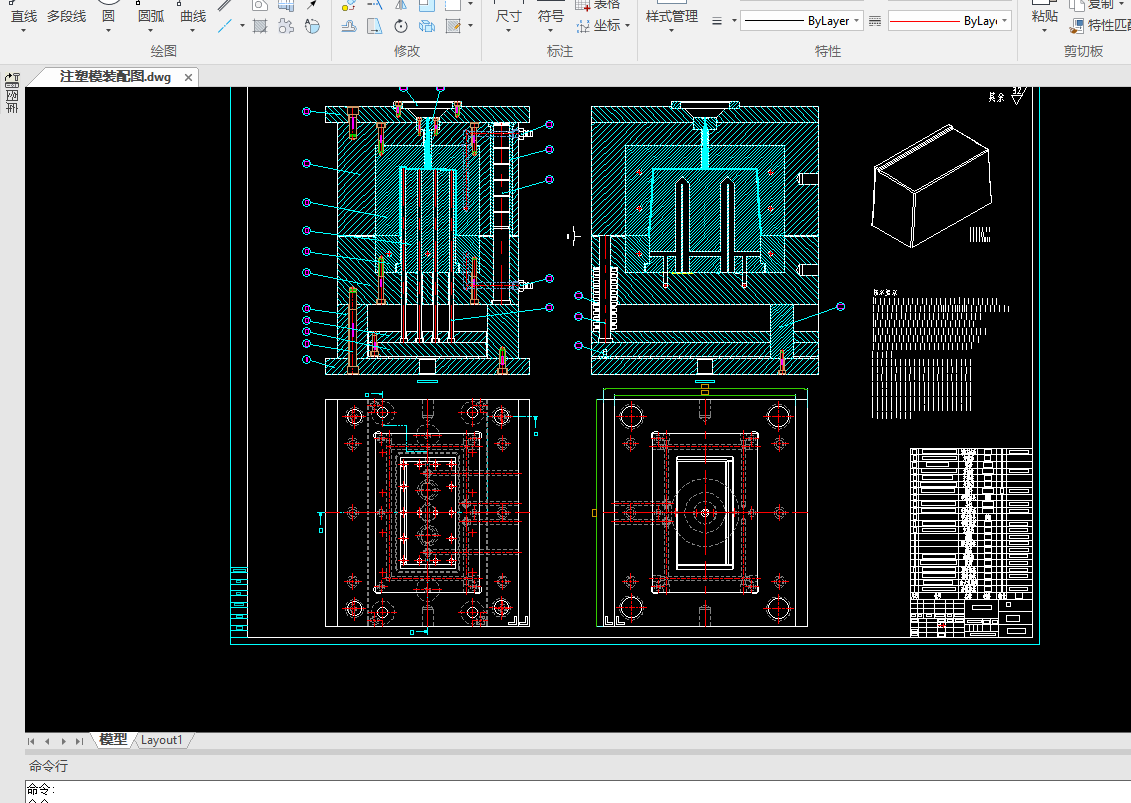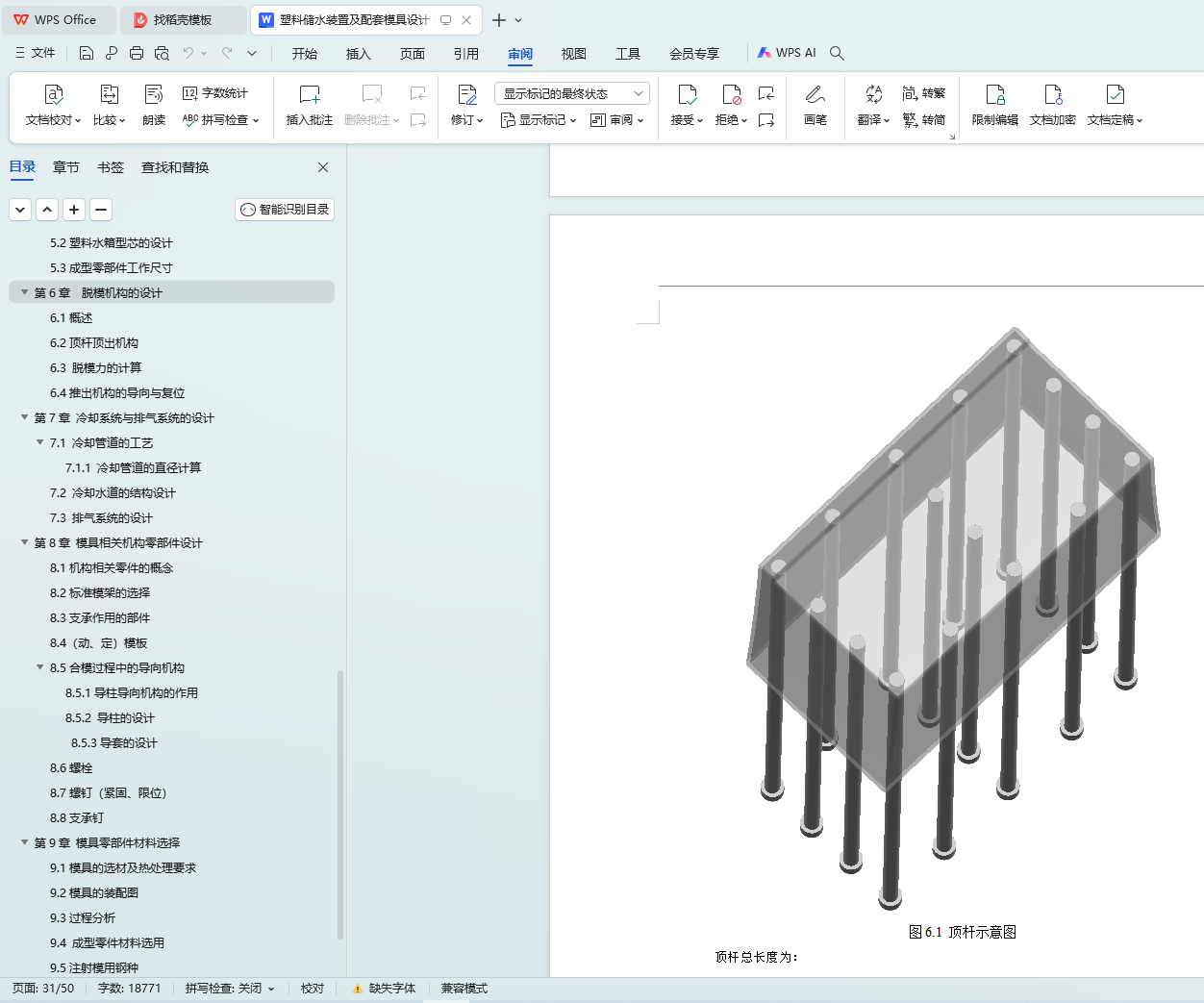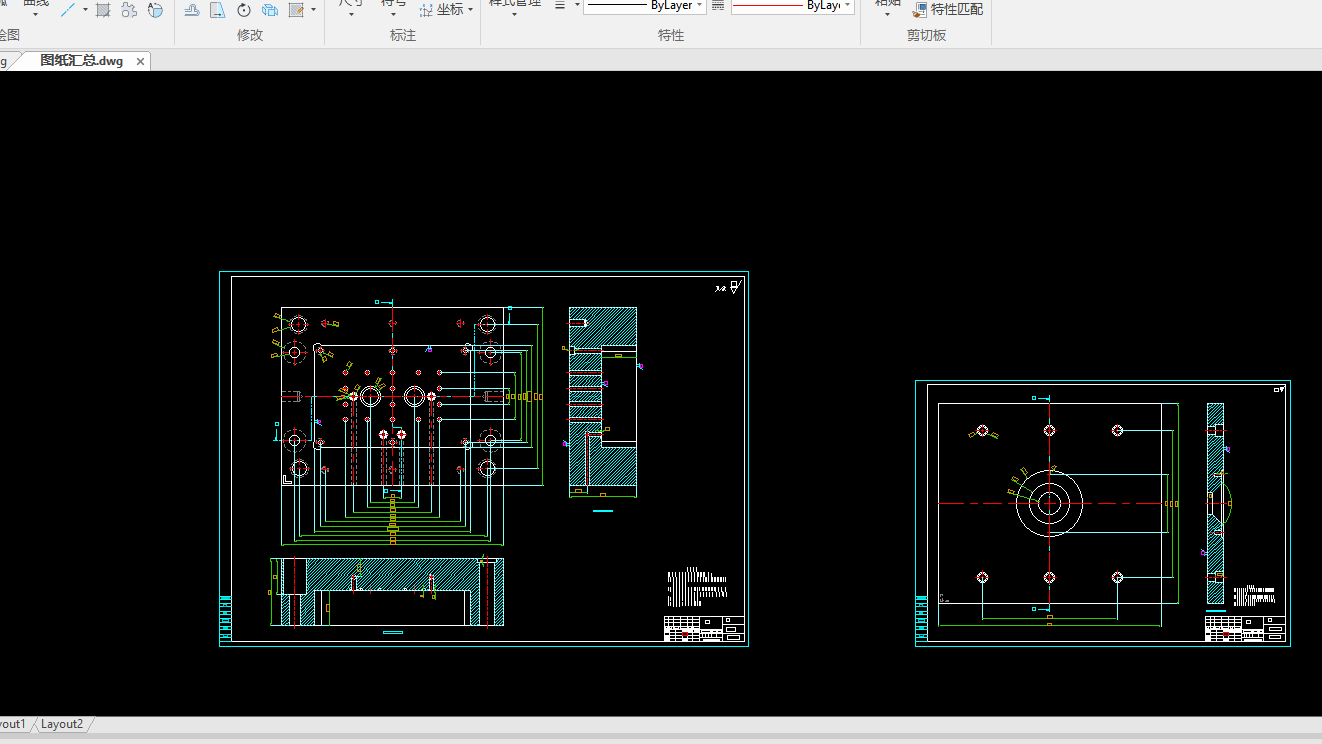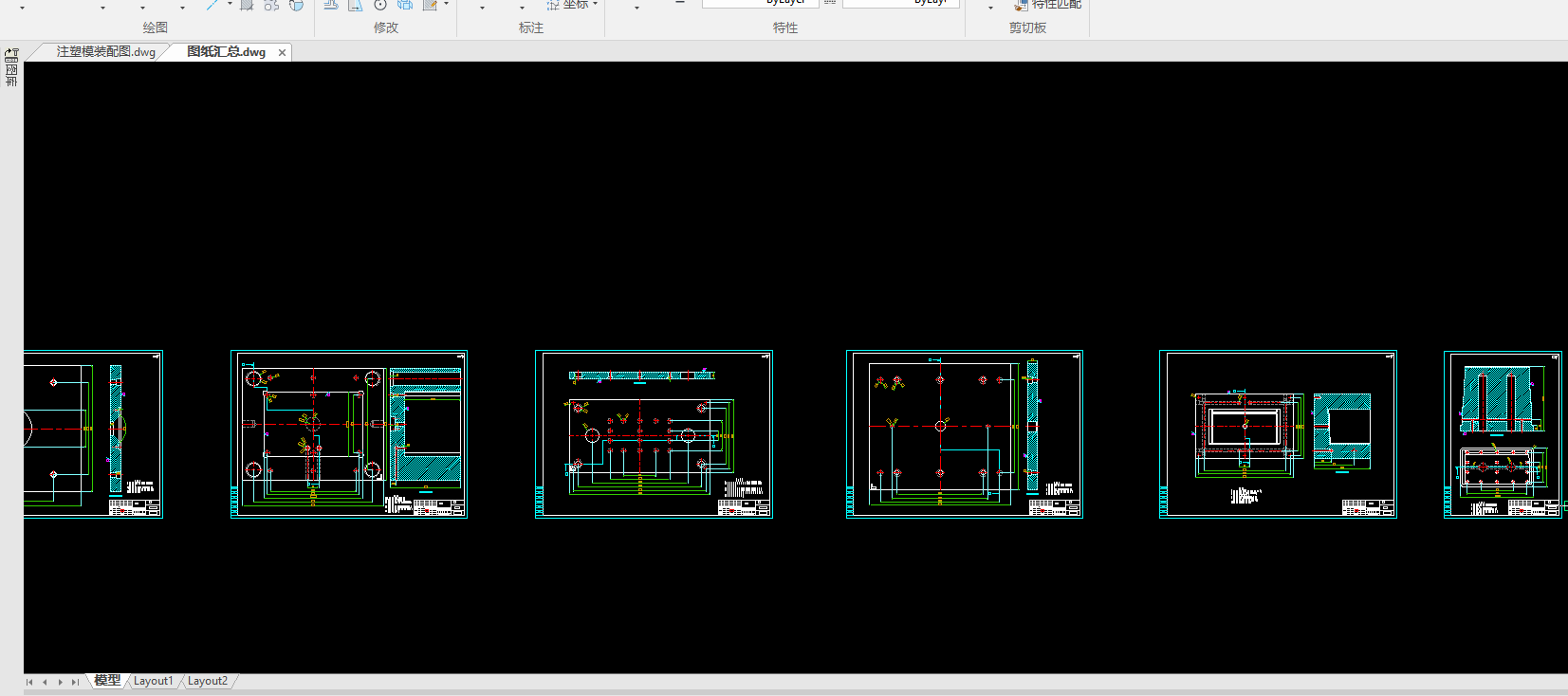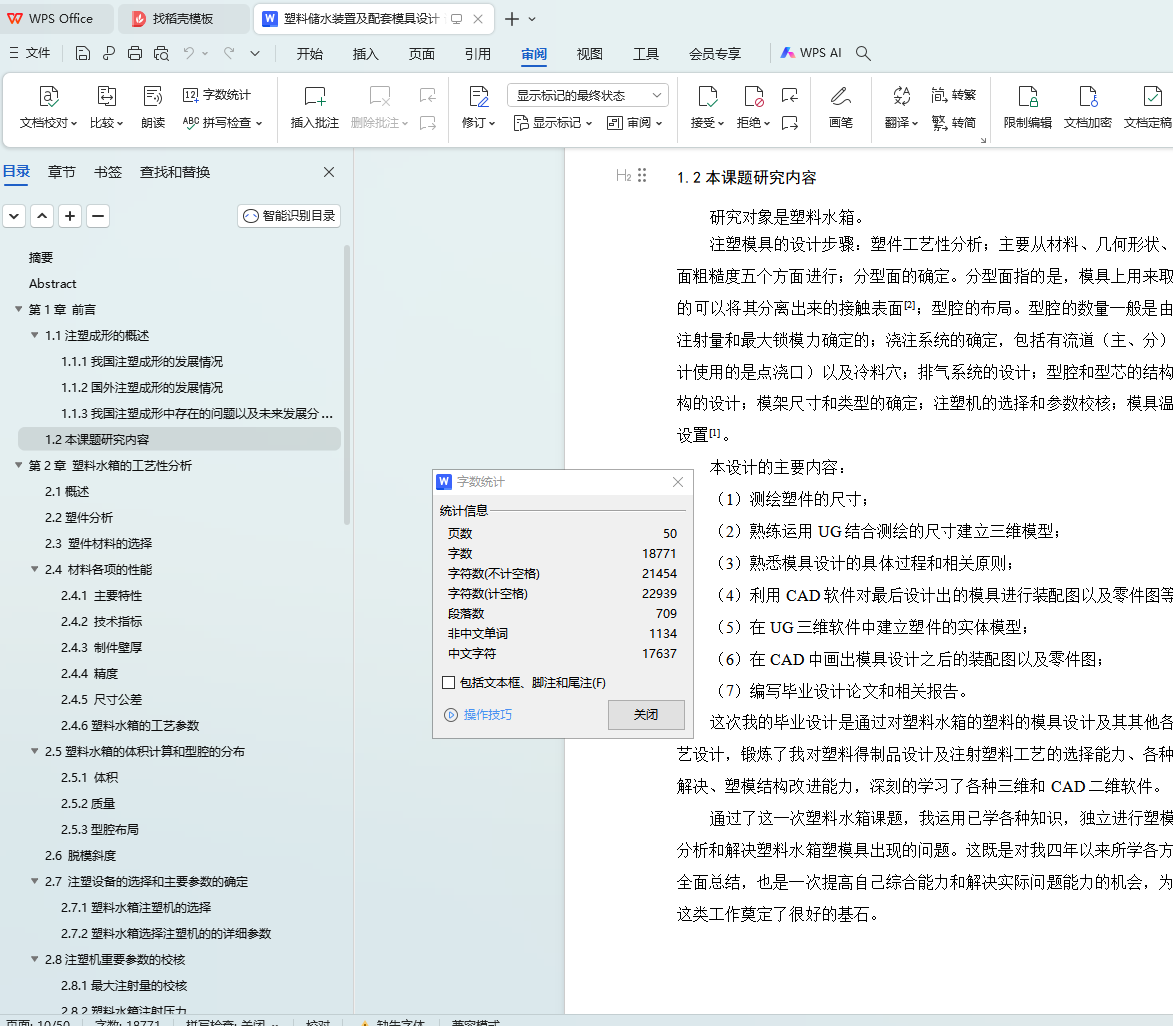摘要
20世纪塑料材料的制品如雨后春笋一样涌现,当然这样的兴起是因为它本身的特点,包括有价格低廉、易塑型、强度大等等。就现在来说,塑料制品已经在很多的方面得到了应用,诸如日常的生活、医疗所使用的设备、电子电器制品方面、汽车内部设备等。
塑料制品有很多种成型的方法,本设计使用的是最常使用的注塑方式——注射成型,进行塑料水箱注塑模模具设计。
本设计的模具设计对象为塑料水箱,前期对于设计对象进行了相关的测量,数据的记录等;中期主要是使用UG三维设计软件根据前期测量的数据建立立体模型,并在塑件模型的基础上利用UG制造内的模具型腔模块对塑料水箱作出相应的注塑模模具设计,包括有塑件元件、滑块分型面、主分型面、浇口等,并且加入相应的模架、浇口、流道等;后期则是以之前作出的成果为基础使用CAD软件绘制出相应的二维图,也就是工程图,更加清晰的显示出塑件的结构以及模具的机构。
关键词:塑料水箱;注塑模;滑块分型面;主分型面
Abstract
In twentieth Century, the products of plastic materials sprang up like mushrooms, of course, because of its own characteristics, including low price, easy molding, high strength and so on. For now, plastic products have been used in many ways, such as daily life, medical equipment, electrical and electronic products, automotive equipment and so on.
There are many plastic molding methods, the design is the most commonly used injection molding - injection molding, plastic tank injection mold design.
The object of the design for the mold design for plastic water tank, preliminary design objects were related to the measurement data records; interim is mainly to establish three-dimensional model according to the measured data using UG 3D design software, and make the corresponding injection mould design of plastic water tank using the mold cavity module UG in plastic manufacturing base a model, including plastic element, slider type face, the main parting line, gate, and add the corresponding mold gate runner; the latter is to make the results before rendering the 2D map corresponding to the basis of the use of CAD software, which is the engineering diagram, show the structure of plastic parts and die mechanism more clear.
Key words: plastic water tank; injection mold; slide parting surface; main parting surface
目 录
摘要
Abstract
第1章 前言
1.1注塑成形的概述
1.1.1我国注塑成形的发展情况
1.1.2国外注塑成形的发展情况
1.1.3我国注塑成形中存在的问题以及未来发展分析
1.2本课题研究内容
第2章塑料水箱的工艺性分析
2.1概述
2.2塑件分析
2.3 塑件材料的选择
2.4 材料各项的性能
2.4.1 主要特性
2.4.2 技术指标
2.4.3 制件壁厚
2.4.4 精度
2.4.5 尺寸公差
2.4.6塑料水箱的工艺参数
2.5塑料水箱的体积计算和型腔的分布
2.5.1 体积
2.5.2质量
2.5.3型腔布局
2.6 脱模斜度
2.7 注塑设备的选择和主要参数的确定
2.7.1塑料水箱注塑机的选择
2.7.2塑料水箱选择注塑机的的详细参数
2.8注塑机重要参数的校核
2.8.1最大注射量的校核
2.8.2塑料水箱注射压力
2.8.3锁模力的校查
2.8.4校核塑料水箱开模的行程
2.9 选择塑料水箱标准的模架
第3章塑料水箱分型面的设计
3.1概述
3.2选择塑料水箱分型面
3.3 本章小结
第4章塑料水箱浇注系统
4.1塑料水箱主流道设计
4.1.1塑料水箱浇口套设计
4.1.2浇口套的固定形式
4.2塑料水箱分流道的设计
4.2.1 分流道的设计
4.2.2浇口的尺寸
4.3 冷料穴
第5章 设计塑料水箱模具成型零部件
5.1塑料水箱型腔的设计
5.2塑料水箱型芯的设计
5.3成型零部件工作尺寸
第6章 脱模机构的设计
6.1概述
6.2顶杆顶出机构
6.3 脱模力的计算
6.4推出机构的导向与复位
第7章 冷却系统与排气系统的设计
7.1 冷却管道的工艺
7.1.1 冷却管道的直径计算
7.2 冷却水道的结构设计
7.3 排气系统的设计
第8章 模具相关机构零部件设计
8.1机构相关零件的概念
8.2标准模架的选择
8.3支承作用的部件
8.4(动、定)模板
8.5合模过程中的导向机构
8.5.1导柱导向机构的作用
8.5.2 导柱的设计
8.5.3导套的设计
8.6螺栓
8.7螺钉(紧固、限位)
8.8支承钉
第9章 模具零部件材料选择
9.1模具的选材及热处理要求
9.2模具的装配图
9.3过程分析
9.4 成型零件材料选用
9.5注射模用钢种
第10章 经济分析
第11章 总结
致 谢
参考文献
